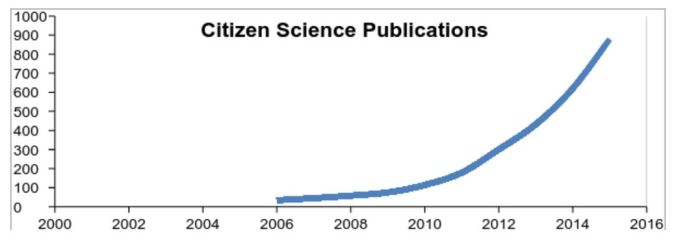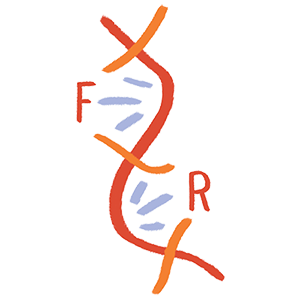
Several people stand in a circle holding puzzle pieces that put together form the image of a light bulb, representing the power of communities coming together to solve local problems. Artwork by Iris Jong .
Citizen science has exploded in popularity in the last decade, with birdwatchers taking the lead in showcasing the power of public participation in science. But which segments of the public are invited to participate and which are excluded? And how can we practice a citizen science that fulfills its radical potential?
Citizen science, or “knowledge production by nonprofessional scientists,” has exploded in popularity in the last decade, capturing the attention of academics, government officials and activists alike. Advances in information and mobile technology now make it possible for anyone with a cell phone to download an app and submit data from anywhere in the world. “It’s an exciting time to see the public take back the scientific enterprise,” says Rick Bonney, who co-founded the citizen science program at the Cornell Lab of Ornithology (CLO) and coined the term ‘citizen science’ in 1995. However, while it’s great that science is taking a step outside of the ivory tower, it’s important to consider who continues to be excluded.
Bonney, who likes to proclaim that “birders can save the world”, touts the many advantages of a citizen science approach including the ability to produce huge data sets over geographically disparate areas. CLO’s eBird database gathers tens of millions of observations from North American birds each year with contributions from hundreds of volunteers, enabling researchers to answer questions about population distribution, spread of infectious disease, and seasonal migration patterns. The allure of free data and volunteer labor has other scientists taking notice – in 2005, there were only 28 peer-reviewed scientific journal articles explicitly mentioning citizen science. By December 2015, that number surged to 857. [1]

Citizen science projects have limitless applications, ranging from mapping the surface of Mars, collecting air quality and other environmental data, and improving predictive models for coastal change, to tagging millions of archival records and crowdsourcing time-critical information for emergency response. The White House has promoted citizen science, releasing a new citizen science toolkit for government agencies and urging them to each assign a citizen science coordinator. President Obama even set up a citizen science project in his own backyard: a rain gauge used to collect rainfall data as part of a national network for precipitation data.
Unfortunately, scientists have taken a fairly narrow approach to citizen science. Using a crowdsourcing model, scientists dictate what the research questions are and analyze and interpret data, while volunteers only participate in data collection or data processing. The volunteer’s value becomes that of a machine, acting as a highly sophisticated pattern recognizer or sensor working in service of the scientist’s individual goals and research agenda. This not only undervalues people’s unique skills and local knowledge, but also limits which ‘public’ is taking part in citizen science research.
Recent surveys of large-scale citizen science projects suggest that most participants are white, middle-class, and highly educated – something that might be expected from a field led by birdwatchers.[2] The majority of projects currently underway require volunteers who have access to green spaces and the luxury of leisure time to donate to their pet causes. CLO’s Project FeederWatch is supported by volunteers, who not only contribute an estimated $3 million per year in unpaid labor, but who must also pay annual fees to participate.[3] Given these high barriers of entry, it’s not surprising that the majority of citizen science projects have focused on animal conservation (eBird, National Audubon Society), environmentalism (Nature’s Notebook), and astronomy (Zooniverse) – scientific interests that have traditionally been dominated by white men.[4] Appeals for preserving the wilderness or looking up at the cosmos may not resonate for those without access to green spaces or unpolluted skies – often low-income communities of color.

When citizen science moves beyond a crowdsourcing model and creates projects where the public can engage in the full spectrum of the scientific method, or what I call community science, its radical potential comes to the fore. Instead of scientists determining the research questions, methods, and analyses, community members can come together and create research projects that center community needs, and use this data as an organizing tool for policy change. When people can see themselves and their community problems reflected in research, it dramatically expands who feels invested in scientific work.
In the late ‘90s, residents of Norco, Louisiana, a predominantly low-income Black community, collected air quality data through “bucket monitoring”, a low-cost sampling method to measure toxic chemicals produced by the nearby Shell Chemical Plant. Residents found that industrial incidents such as fires or spills caused peak toxic emissions that exceeded regulatory standards and threatened human health. Environmental justice activists were then able to use this data to lobby the EPA, resulting in a multi-year, industry-sponsored, agency-supervised study of Norco’s air quality. Ultimately, Norco residents successfully pressured Shell into offering relocation packages.
There are numerous other examples in which communities have been able to reclaim science to create healthier, more livable communities. The West Oakland Environmental Indicators Project (WOEIP) hired and trained local residents to conduct a truck study that revealed that outdated truck routes located alongside local schools were exposing students to the lion’s share of air pollution from the local shipping industry. WOEIP took this data to city council and passed new land use rules to direct trucks along alternative routes. University College London’s Extreme Citizen Science (ExCiteS) research group has developed mobile apps for community members in the Congo Basin to conduct forest monitoring and detect illegal poaching. By tracking local deforestation and harmful development, community members are better equipped to protect the natural resources they depend on for their livelihoods.
Although it has only recently achieved trendiness in the scientific community, citizen science has actually been around for centuries. The only difference is that back then, it was just called ‘science’. The term ‘scientist’ was coined in 1833 by William Whewell, and it has only been in the past 150 years that science has become a domain reserved for professionals with PhDs. Famous scientists such as Charles Darwin and Ben Franklin were not employed as professional scientists, but rather pursued science as a hobby.
It’s time that the communities reclaim this historical tradition of public participation in science to create healthier, sustainable, and more equitable communities of the future. Thus far the majority of community science projects have been in the realm of environmental justice, but as the field grows beyond the birders we will have to find ways to extend all scientific domains to the public. DIY approaches may provide new opportunities to create cost-effective, accessible tools for scientific inquiry (see Public Lab or Make: for some good resources). How can we create a participatory model for neuroscience? A community centered approach to engineering? What are issues facing your community – and how might science be part of potential solutions? With so much still unexplored, the future of citizen science is ripe with revolutionary possibility.
[1] Statistics generated through ISI Web of Knowledge.
[2] Raddick, M. J., Bracey, G., Gay, P. L., Lintott, C. J., Murray, P., Schawinski, K., . & Vandenberg, J. (2009). Galaxy zoo: Exploring the motivations of citizen science volunteers.
[3] Lave, R. (2012). Neoliberalism and the production of environmental knowledge. Environment and Society: Advances in Research, 3(1), 19-38.
[4] Although environmentalism has traditionally centered white interests, environmental justice frameworks reveal that environmental concerns have a profound impact on low-income communities of color who are disproportionately affected by pollution and climate change. Further, many environmentalist ideals originated in indigenous communities long before the environmental movement began.





